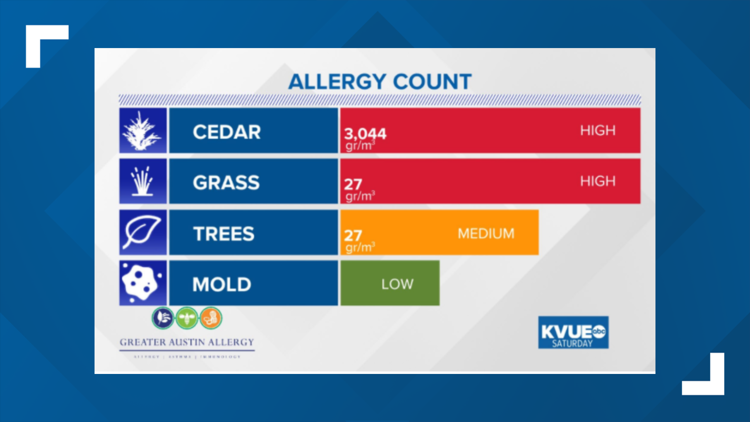AUSTIN, Texas — Allergy sufferers won't be excited about what is in store for Central Texas this weekend. Cedar season is well underway and it is certainly showing during Saturday's allergy count.
Our weather team collects samples daily outside of the KVUE studios in order to obtain an accurate count for allergens in the area. Samples are reported in grains per cubic meter of air. A day consisting of medium cedar traces would range anywhere from 100 to 500 grains per cubic meter. However, Saturday morning's allergen count consisted of a whopping 3,044 grains per cubic meter.


This surge in cedar is most likely due to the strong northerly winds Central Texas experienced right before the holidays. While cedar season spans from the end of November until March, the peak months are December through February. The highest cedar pollen counts occur when a dry, strong wind blows pollen from the northwest into Central Texas. That strong wind also shakes trees to release some of that pollen.


According to Texas MedClinic, mountain cedar is considered the most allergenic tree in Central Texas and can cause numerous symptoms, such as sneezing, runny nose and watery eyes. Some symptoms might even mimic those of COVID-19, like headaches and partial loss of smell.
Texas MedClinic suggests a variety of steps to help reduce symptoms and exposure to pollen. Some tips include keeping doors and windows closed, changing your AC filter often, and changing your clothes after spending a lot of time outside. Allergy sufferers can also utilize over-the-counter medications to help manage symptoms.
RELATED:


